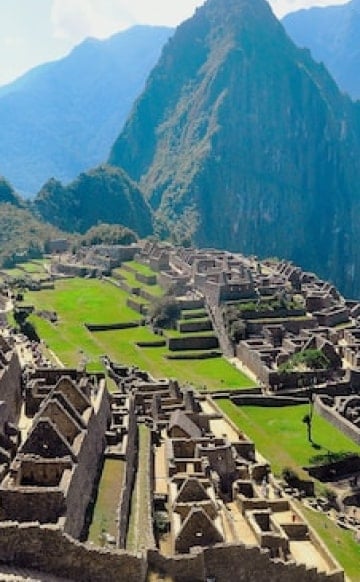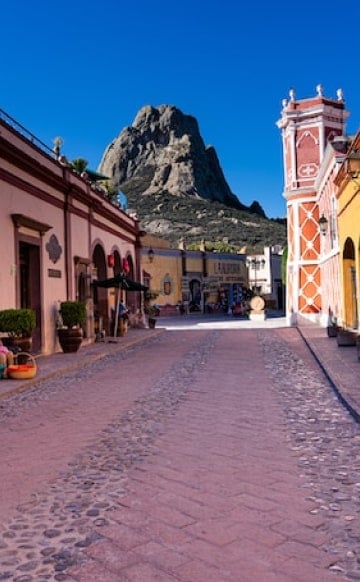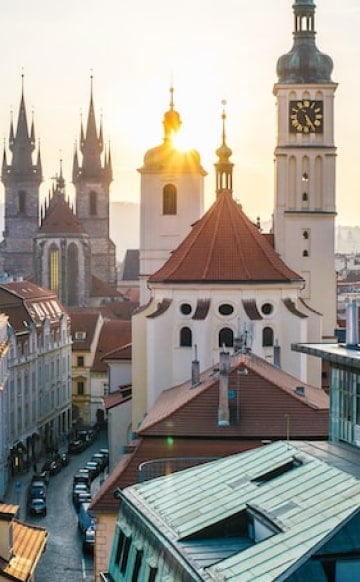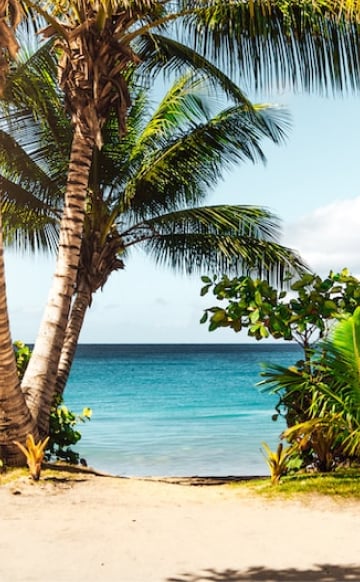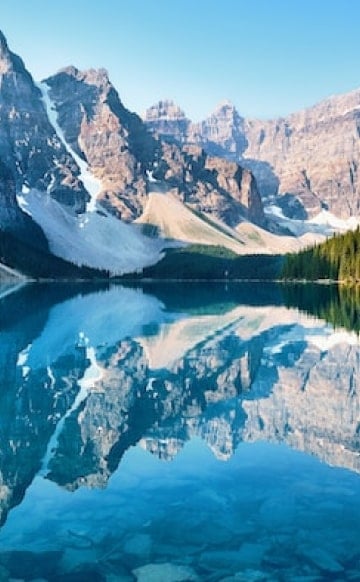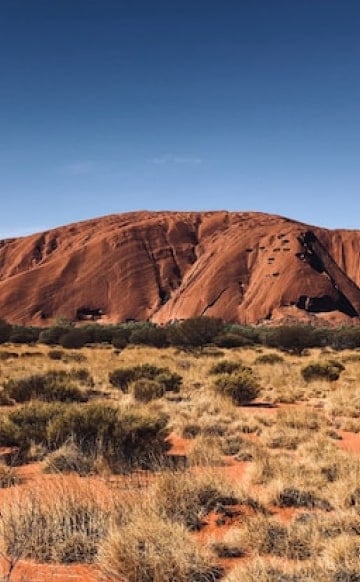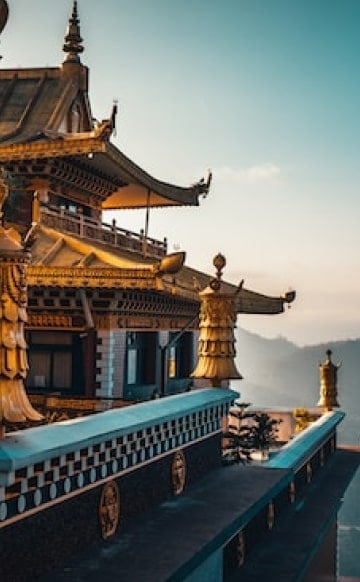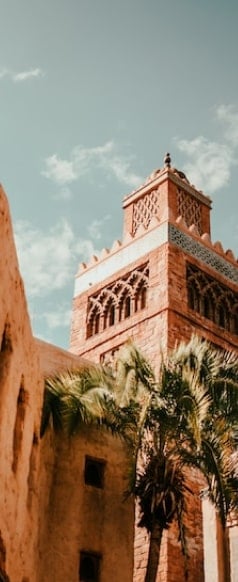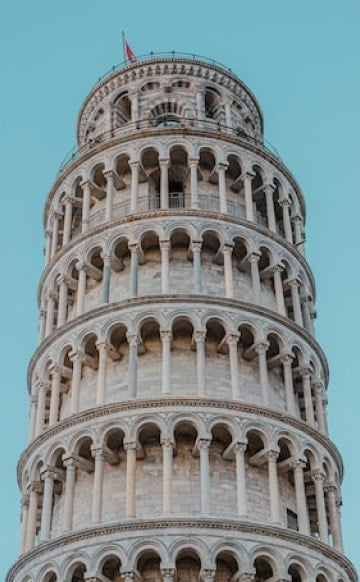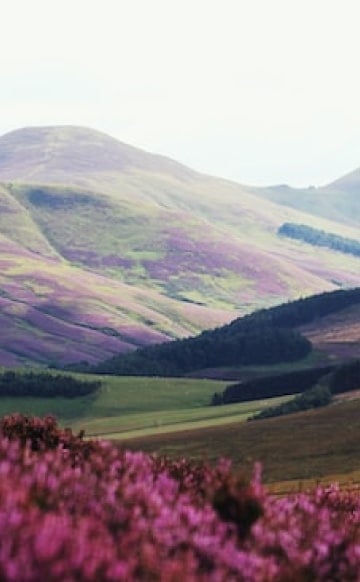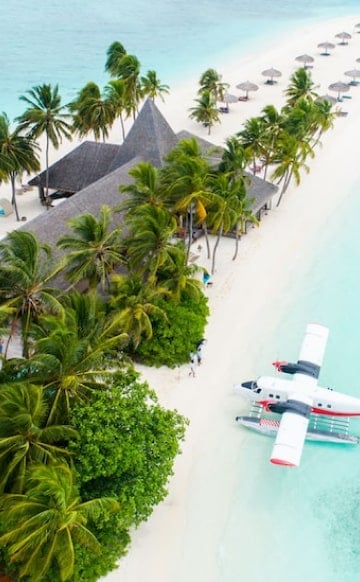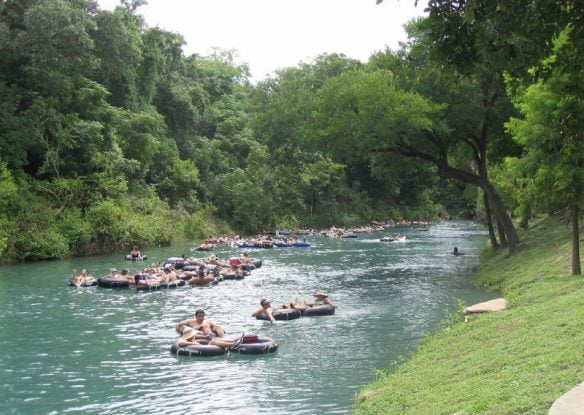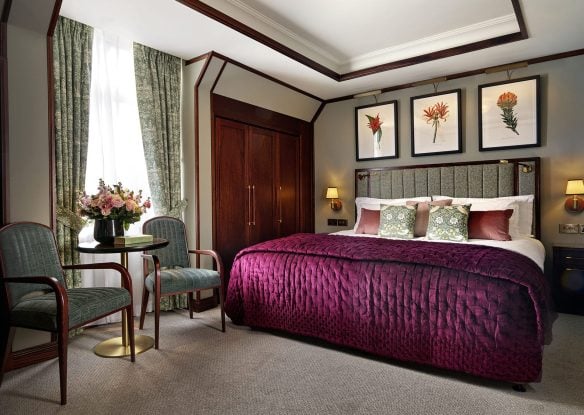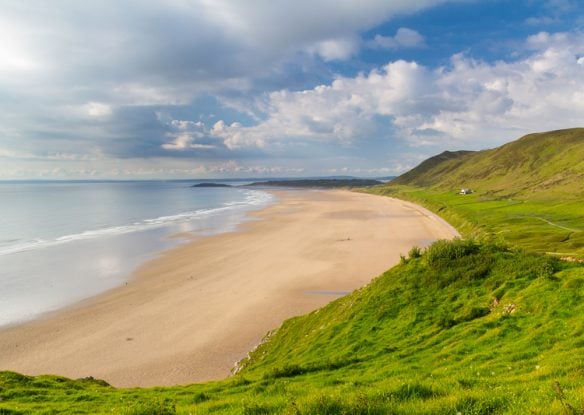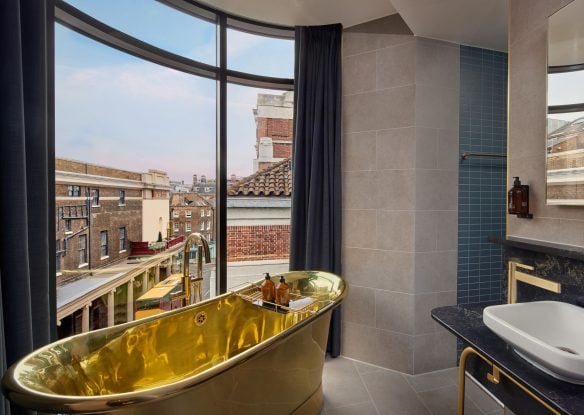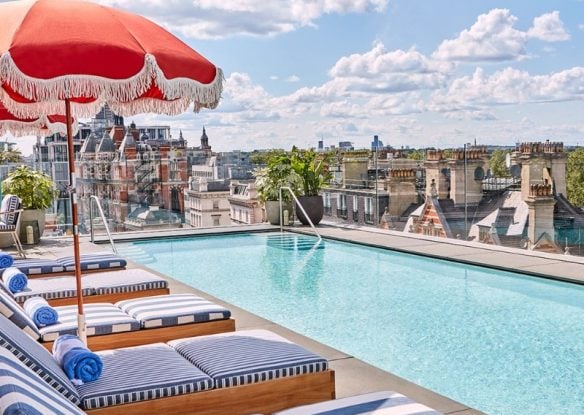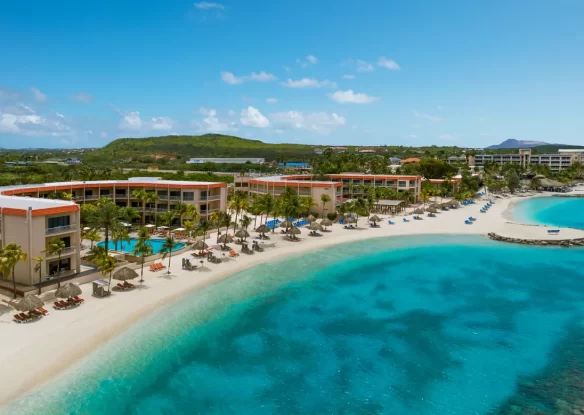Scotland is a beautiful addition to any travel bucket list. Some of the destinations in this country look like they’re right out of a storybook. If you’re planning on exploring this gorgeous destination, here are some of the best places to visit.

Finnich Glen
Sometimes referred to as the “Devil’s Pulpit,” Finnich Glen is a breathtaking natural gorge with a very interesting history. The 70-feet-deep gorge located near Craighat Wood can be found under the small stone bridge that you’ll cross before entering the picturesque village of Croftamie. It’s said to have been used for Druid rituals and secret meetings by clandestine Covenanters. It’s easy to see why they were drawn to this stunning deep crevice, with its towering cliffs and hidden alleyways. The brilliant green moss covering the walls provides an otherworldly backdrop, while the water flowing through the red sandstone sometimes resembles a river of blood. If you’re a fan of the show “Outlander,” this may look familiar to you as it was this spot that was said to possess truth-telling powers in the series.

Edinburgh
Edinburgh is often named among the world’s most beautiful cities, and you’ll find a long list of popular attractions to explore, offering a rich history with a medieval Old Town and Georgian grace-filled New Town, it’s not hard to understand why. This spectacular capital is enveloped by seven hills, with its famous Royal Mile framed by Edinburgh Castle and the magnificent Holyrood Palace. The 11th-century castle is a world-renowned Scottish icon, sitting atop an extinct volcano. Its witnessed everything from royal ceremonies, lavish feasts and the birth of a king to savage battles, ruthless politics and the deaths of queens. If you’re in the city, a visit is a must. Explore the castle’s rooms, be enchanted by the dazzling crown jewels and check out “Mons Meg,” a medieval siege gun as well as the Stone of Destiny and the One O’Clock Gun. The views from the castle alone are worth the trip.
Other highlights in Edinburgh include the National Museum of Scotland, Royal Botanic Garden and taking the trek up Calton Hill, especially if you’re a fan of writer Robert Louis Stevenson, who called it his favorite spot.

Isle of Skye
The largest of the Inner Hebrides, the Isle of Skye is an absolutely mesmerizing Scotland destination with lots of things to see and do. Its striking landscape is filled with soaring emerald-covered mountains, dramatic sea cliffs that touch down to seashell-strewn stretches of sand, unique rock formations and waterfalls almost everywhere you look, some of which plunge into the turquoise waters of the Atlantic. Explore the isle by taking a walk around the Quirang, and even hiking up to the summit, easily reached by taking the short, well-maintained path. Afterward, enjoy a refreshingly cool dip in the crystalline waters of the Glen Brittle Fairy Pools and a whiskey tour and tasting at Talisker Distillery.

Isle of Islay
You can also head to the Isle of Islay for awe-inspiring scenery and fine whiskey. The island is home to eight single malt distilleries and offers a serene, magical beauty as well as all sorts of wildlife, including more than 200 bird species, like puffins and golden eagles, along with animals like grey seals, otter and red deer. One of the best ways for traveling females to experience all that Islay has to offer is to join Rachel MacNeill’s “Whisky for Girls” tour. The tours include visits to area distilleries as well as ancient relics and the most isle’s most scenic sights.

Loch Ness, Inverness
Many visitors head to Scotland’s most famous loch to try to catch a glimpse of its famous Loch Ness monster, but that’s not the only reason you should visit. Explore the 754-foot-deep lake on a Loch Ness trip from Inverness keeping an eye out for the legendary monster, hike around the lakeshore, and visit the ruins of Urquhart Castle, once one of the country’s largest castles. Today, only the ruins of the medieval fortress remain, but it’s still fun to explore as well as to take in views of the lake. Climb Grant Tower, which watches over the iconic loch, peer into a miserable prison cell said to have held the legendary Gaelic bard Domhnall Donn, and envision the splendid banquets once staged in the great hall. At the Loch Ness Centre & Exhibition, you can learn about the legends of the country’s most mysterious sea creatures.

Cairngorms National Park
One of Scotland’s two national parks, Cairngorms National Park sits within the country’s northeast region. One of the best things to do in the Scottish Highlands, the park is a true mountain wilderness home to five out of six of Scotland’s highest peaks, and four out of 10 of the highest in Britain. It also boasts some of the most beautiful lochs and rivers, native forests, farmland and moorland, as well as being a stronghold for Scotland’s wildlife. Just a few of the creatures you might spot include reindeer, wildcat, pine marten, golden eagle, deer and badger. And, there are miles and miles of trails that allow visitors to explore the region too. Frequent visitors recommend walking around Loch Muick as well as taking in the view from the top of the nearly 4,300-foot Ben Macdui.

Orkney Islands
The Orkney Islands drift just off the north coast of Scotland, and their miles of rocky coastline are teeming with wildlife, home to puffin and sea colonies, giant Arctic seabirds and dolphins. The UNESCO World Heritage-listed islands are also famous for their fascinating array of Neolithic monuments, stone circles and tombs, including the Standing Stones of Stennes, four giant megaliths that may be the oldest henge site in the British Isles, believed to be part of an original ring of 12 that date from the third millennium BC. Orkney’s most famous landmark, the Old Man of Hoy, is an imposing 450-foot sea stack on the island of Hoy carved from layer upon layer of Old Red Sandstone. Its shaping can be traced back through the centuries through maps and paintings – in 1750, it was depicted as a headland, but just 70 years later the stormy seas had carved the rock into a stack and arch, with the two legs giving it the name of Old Man.

Glasgow
Glasgow is a dynamic city with an array of fascinating popular attractions. “Once the second city of the British Empire, when its shipping, industry and commerce circled the globe, it has reinvented itself as a cultural powerhouse of music, creative arts, theatre, design and innovative cuisine,” Bell said. He notes its impressive architecture with “a wealth of extravagant Victorian buildings in red and blond sandstone… Italianate palazzo facades, Art Nouveau reminiscent of Gaudi, and classical Greek and Roman motifs,” adding, it’s also a “sociable city that has always known how to party.”
Bell isn’t the only one to rave about Glasgow, National Geographic Traveler named it one of their top 20 ‘Best of the World’ destinations for its “world-class architecture, vibrant nightlife, breathtaking scenery and outstanding shopping.”

Glencoe Valley
Scotland’s most scenic mountain valley and most famous Glen, is also one of the country’s most dramatic, with its forbidding mountains, tumbling waterfalls and glistening lochs helping to create a landscape so serene it looks as if it was all Photoshopped. Fronted by the pristine expanse of Loch Leven and overshadowed by the pinnacles of the Three Sisters mountain range as well as the cone-like Pap of Glencoe, walking through the valley is one of the nation’s most rewarding hikes. Walkers and climbers are drawn from all corners of the globe to tackle its many mountaineering routes, including eight Munros, while wildlife lovers come to catch a glimpse of red deer, golden eagles and pine martens.

Corryvreckan Whirlpool
The third largest whirlpool in the world is the incredible natural phenomenon known as Corryvreckan, which lies between the Isles of Jura and Scarba. The unusual topography combined with strong Atlantic currents produces an especially intense tidal race when the flood tide enters the narrow area between two islands. It speeds up to 10 miles per hour and meets a variety of seabed features including a deep hole and a rising pinnacle, which all come together to create whirlpools, standing waves and an array of other surface effects. As it sits in the middle of the water, the best way to see this bubbling cauldron up close is to take a boat tour. One of the main departure points for the boat trips is the little port of Ardfern on the banks of Loch Craignish. The two-hour cruise across the bay to the whirlpool passes a sea eagle nesting site and a seal colony.

New Lanark
New Lanark is a village on the River Clyde and a UNESCO World Heritage Site. The old cotton mill village sits within a sublime Scottish landscape where Utopian idealist Robert Owen once molded a model industrial community. Owen provided decent homes, fair wages, free health care, a new education system for villagers and the first workplace nursery school in the world. Over 2,000 people lived or worked in the village and the mill which operated for nearly 200 years, until 1968. New Lanark offers numerous attractions, including a ride known as the Annie McLeod Experience which will take you back in time, Owen’s School for Children and his home, a village store, roof garden, mill workers’ homes and working textile machinery.

Barra
Visiting Barra, the most southerly of the inhabited islands in the Outer Hebrides, is a unique experience – especially the landing if you arrive by air. Traigh Mhor is a one-mile stretch of sand that serves as the world’s only beach airport. At high tide, the runway disappears beneath the waves. Head to Tangasdale Beach and enjoy jaw-dropping sunsets along with powdery sand and deep azure waters framed by low emerald headlands and jet black rocks. You can also enjoy breathtaking scenery as you bike or walk around this small, but incredibly stunning island. Clearwater Paddling out of Castleby offers the ultimate sea kayaking experience, with guided tours where you’ll explore this world of picture-perfect islands and sheltered bays.

Isle of Arran
Known as “Scotland in Miniature,” the Isle of Arran is only 166 square miles in size and a mirror image of the landscape found on the mainland. It boasts postcard-like sandy beaches, an abundance of wildlife, towering mountains and magnificent castles, fishing villages, fabulous golf and some of the most friendly locals you’ll ever meet. Around just about every corner or more awe-inspiring views, including vistas that overlook the Firth of Clyde towards the Kyles of Bute and the mountain range with Goatfell in the foreground that can be enjoyed while sailing into Brodick Bay. Look for deer around Lochranza and enjoy a bird watcher’s paradise by walking just about any of Arran’s long beaches, with a wide range of seabirds, including sea eagles often spotted along the coastline.

Ben Nevis
The soaring peak of Ben Nevis is not only Scotland’s highest point, but the highest mountaintop in the entire United Kingdom. Hiking, climbing and scrambling up its steep face is considered one of the country’s greatest challenges, though hikers up to the task will be rewarded with some of the most spectacular views in Scotland. The vista stretches from the Grampian Mountains towards distant Glencoe and the Atlantic coast. On an especially clear day, even Northern Ireland comes into view. The main route upward is the “Pony Track,” which begins atAchintee, about one-and-a-half miles east of Fort William, bringing walkers up the west flank, maintaining a steady and not overly steep gradient for much of the way.

The Trossachs and Loch Lomond National Park
This area of outstanding natural beauty was once roamed by legendary outlaw Rob Roy MacGregor. Since the 19th century, visitors have been drawn here by tales and poems inspired by local legends and the romantic landscape that features stunning, wild scenery as well as an interesting history. In the heart of the park is Loch Lomond, “The Queen of Scottish Lakes,” according to author Walter Scott, the largest lake in Britain. With its waters filled with trout, salmon and whitefish, it’s a popular destination for anglers, though it’s been used by generations of Scots as well as visitors for boating, water skiing, swimming, and picnicking. One of the best ways to experience it is to take a boat excursion or a hike around its shores. At the south end of the loch, is Balloch Castle, an early 19th-century country house.

Fingal's Cave
Located on the uninhabited island of Staffa, Fingal’s Cave is 72-feet-high and 270-feet-deep, but what makes this sea cave such a standout visually, is its unique cathedral-like structure and hexagonal columns of basalt, shaped in neat six-sided pillars. Reportedly, famed composer Felix Mendelssohn was so enamored by the splendor of the cave, that he sent the opening phrase of an overture on a postcard to his sister with the note: “In order to make you understand how extraordinarily the Hebrides affected me, I send you the following, which came into my head there.” The Hebrides Overture, also known as Fingal’s Cave, premiered on May 14, 1832, in London. Artist J. M. W. Turner painted “Staffa, Fingal’s Cave” that same year, which together launched the cave from a little-known wonder into a must-see Romantic-Victorian tourist site. Since then, the likes of Lord Tennyson, John Keats, Queen Victoria and Jules Verne, have visited in the years since.

Shetland Islands
The Shetland Islands are irresistible, with chocolate-box villages as charming as the islands’ native miniature ponies and a blend of Scottish and Nordic cultures. Set just outside the northernmost tip of the British Isles hidden in the North Sea, the Shetland archipelago is Britain’s most distant and most starkly stunning clutch of islands, a wild archipelago famous for its unspoiled beaches, diverse wildlife and archaeological sites. While visiting in the summer is the best time to experience those attractions, some say the best time to come is in January because that’s when the Isles host Up Helly Aa, a fire festival that pays homage to their Viking heritage.

Mull of Galloway
On the opposite end of the spectrum is Scotland’s most southerly point. An unspoiled paradise and one of Britain’s best-kept secrets, the Mull of Galloway offers gorgeous countryside combined with miles of sandy beaches, lovely views and cliff-top walks. Wildlife here is plentiful, in fact, it’s known as one of the best places in the U.K. to view porpoises, dolphins and all sorts of sea birds. Because of the relatively warm climate, the area is blessed with six spectacular gardens too, each with its own individuality, and a variety of plants and trees. A must-do here is to climb the 115 steps to the top of the pretty whitewashed Robert Stevenson-designed lighthouse and enjoy the amazing panoramic views.

The Ring of Brodgar
The third-largest and one of the grandest stone circles in the U.K. can be found on Orkney. The Ring of Brodgar dates back to around 2500 to 2000 BC. An iconic feature of the island, the reason for its existence still remains a mystery. The stone ring was built in a true circle, a little over 341 feet wide. Although it is thought to have originally contained 60 megaliths, that figure is not based on archaeological evidence. Today, only 27 stones remain. In contrast to the giant megaliths that make up the Standing Stones of Stenness, these stones are much smaller, varying in height from just seven feet to 15 feet, 3 inches.

Melrose Abbey, Melrose
Arguably Scotland’s most famous ruin, and certainly one of its most alluring, Melrose Abbey is a partly ruined monastery of the Cistercian order in Melrose, Roxburghshire in the Scottish Borders region. The surviving remains of the church date back to the early part of the 15th century and its interesting history offers visitors a strong sense of romance. An unopened casket containing King Robert the Bruce’s heart lay in Edinburgh until 1998, when it was buried again on June 22 at Melrose Abbey. The abbey is also known for its multitude of carved decorative details, including likenesses of saints, dragons, gargoyles and plants. On one of its stairways is an inscription by John Morow, a master mason, which says, “Be halde to ye hende,” translated to “Keep in mind, the end, your salvation,” which has become the motto of the town of Melrose.

Luskentyre Beach, South Harris
While Scotland has more picture-perfect stretches of sand than you can count, Luskentyre Beach on the west coast of South Harris in the Outer Hebrides has frequently been named one of the best beaches in the world – and, it’s easy to see why. One of the most jaw-dropping places on the planet, its striking white sands sit at the edge of turquoise waters as if they belonged in the Caribbean. This is the place to go if you’re seeking solitude, relaxation and nature. It’s hard to believe that it can get better than this – but it does, when you spot those wild ponies grazing along the dunes, or catch a glimpse of the otters, seals, dolphins, eagles and deer that all call this island home.

Whiskey Distilleries
Whiskey has been around almost as long as Scotland itself, with the Scots producing and drinking fermented beverages here for thousands of years. After all that time, they’ve definitely got it down to a fine art. Any visit to this country should include at least one stop at one of its many distilleries. If you visit the Isle of Skye, Talisker, producing since 1830, is one of the best. Nestled on the island’s remote west coast on the shores of Loch Harport, not only does it have a strikingly picturesque location, but the sea air imparts conspicuous elements to its whiskey, known for its peaty element. Visitors can take a tour and enjoy a tasting as well as a roundtable discussion over drams of Talisker’s out-of-this-world spirits.
Glenturret Distillery in Crieff, a popular tourism hub set among picturesque Perthshire scenery, is Scotland’s oldest distillery, offering a range of whisky tastings, warehouse tours and blending experiences.

